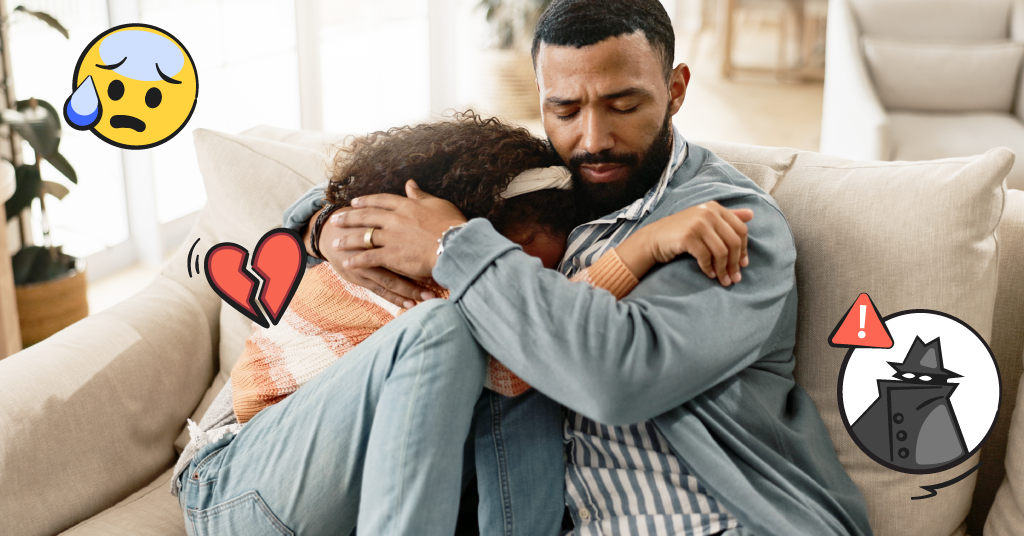
Human trafficking, sex trafficking, child trafficking — these are all terms that can refer to the different ways that human beings can be manipulated into labor or sex work. It can be a really scary subject to talk about, but it’s important to understand this very real danger so you can recognize its potential signs. This, in turn, can help you protect your family and bring awareness to your community. January is National Human Trafficking Awareness Month, and we’re bringing to light some of the common myths about human trafficking — and realities — surrounding this crime.
Human Trafficking Myths: Kidnapping is how most trafficking begins
Fact: Trafficking doesn’t usually begin with a violent act like kidnapping. Many people know their traffickers or are recruited online. Like many victims of abuse, victims of trafficking are often identified, targeted, and manipulated because of their family situation, emotional vulnerability, or financial need. Common schemes involve convincing young people that they can become models, only to be tricked into trafficking.
Human Trafficking Myths: The vast majority of trafficked individuals are girls or women
Fact: Boys and men are also trafficked as much as girls and women. According to Polaris, young men and LGBTQ+ individuals are especially vulnerable. When young people are forced to leave their homes – for example, when queer teens are kicked out by unsupporting parents – they can be desperate for necessities and shelter and as such, extremely vulnerable to manipulation.
Human Trafficking Myths: All traffickers are complete strangers to their victims
Fact: It’s a sad truth that trafficking can also happen to people by their parents, their romantic partners, and their extended family. This violation of trust makes it all the more traumatic — but also harder to identify from the outside.
Human Trafficking Myths: Trafficking victims are usually physically unable to leave where they’re being held
Fact: While this may be true in some cases, many traffickers use different forms of manipulation to keep their victims in place. Fear of homelessness, lack of money, trauma, drug addiction, and threats of retaliation may keep someone from leaving a trafficking situation even though they’re desperate to escape.
Human Trafficking Myths: Trafficking occurs only in developing countries
Fact: Trafficking occurs in the U.S. at very high rates, and major cities with international airports are often hubs. This crime isn’t limited to cities, however; it can also occur in rural areas with American citizens who have never left the country. Trafficking can sometimes be confused with human smuggling, which is entirely different and involves moving people across borders. Trafficking, on the other hand, can occur in one’s own home — even by a family member.
How you can help spread awareness
If you suspect that someone you know might be at risk of human trafficking, you can call 888-373-7888 to reach the National Human Trafficking Hotline, which is available 24 hours a day in more than 200 languages. You can also report an incident to the National Center for Missing and Exploited Children’s CyberTipline.
Donating or providing volunteer support to organizations like Polaris or END IT Movement can also help remove kids from trafficking situations.
Finally, simply talking about this serious issue and bringing it into the open can help others understand it and learn to recognize just how dangerous and real the threat is even here in America.
How Bark can help
Bark’s advanced technology monitors your child’s online activities and sends alerts for conversations that may indicate grooming, which can be used to initiate one-on-one molestation, but it’s also regularly used to lure minors into child trafficking.
Bark can also help you by enabling you to block potentially dangerous apps like Discord or Snapchat. Start your free trial to see how the Bark app can help protect your family from trafficking and other dangers, including bullying, suicidal ideation, sexual content, and more.
We also have a more comprehensive option with the Bark Phone, which goes beyond monitoring and adds exclusive features like contact and app approvals, remote alarms, and daily screen time limits.
Read more
Bark helps families manage and protect their children’s digital lives.





